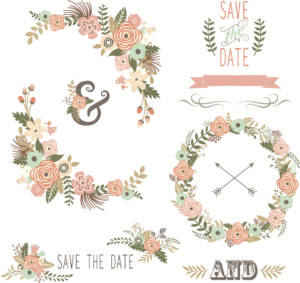
Planning a wedding with your partner can be daunting. Thankfully, there are some easy ways to make sure you don’t drive each other absolutely bonkers.
The decision to get married can be a very exciting one. You and your partner are in for a lifetime of adventure together once you have gotten engaged. Of course, you also need to make sure you focus on specific aspects of your relationship. Planning a wedding can put a lot of pressure on you both, and it is very common for most couples to get into a few spats throughout the process. Thankfully, there are some easy ways to make sure you don’t drive each other absolutely bonkers.
Taking time to appreciate your significant other is vital to maintaining a happy and healthy relationship. To prepare for what’s in store and be ready for anything, look over these simple ways to keep yourselves sane and working as a unit.
Spend Time Together
This might not come as a huge surprise to anyone, but spending quality time with your significant other is a fantastic way to reinforce your relationship. Unfortunately, plenty of couples make the mistake of thinking any time together is good. While it might be nice to get together to plan for your future wedding, you also need to focus on other activities in order to keep your connection alive in more exciting ways. Only spending time together writing out invitations or communicating with vendors can easily become a bore.
The best way to be together is by making time for each other. Set a little bit of time each week aside to do fun couples activities. This can be anything from cozying up on the couch for binging a bit of Netflix, to cooking and enjoying a meal together, to taking a stroll through the neighborhood and having a leisurely conversation. No matter what you do, try and make sure you aren’t focused on wedding details. Leave that for another day and concentrate on the relationship that led to the engagement in the first place.
Spend Time Apart
It is true that spending quality time with your significant other is a great way to strengthen your connection, but there are instances when you are going to need to do the exact opposite. Spending too much time with your partner can easily have a negative impact. You don’t want to constantly be breathing down each other’s necks, so you may want to practice getting involved with people outside of the relationship.
According to experts, the happiest couples are those who have their own lives away from their partner. You and your partner both want to have your own friends, for example. These can be friends from childhood or people you have met along the way. Both you and your significant other should have trustworthy friends and confidants to turn to when you need to vent, decompress, or recharge.
Put In the Effort
It might be taxing to plan for a wedding, but you can’t let your exhaustion be an excuse for not putting in the effort in your relationship. No matter how tired you are or how many tasks you need to complete before the deadlines arrive, it is crucial for you to make time for your partner in the right ways. When you remember basic household tasks like making dinner, cleaning the bathroom, or even making the bed in the morning, it can do wonders to keep your love alive.
Though putting together your dream wedding might require a lot of effort, you still need to keep the home fires burning with your significant other. Learn how to make time for each other and put it to good use to keep your connection as strong as it has always been.




